|
When a substantial part of any story they’re telling takes place in Scotland, screenwriter Paul Laverty and director Ken Loach do seem to enjoy kicking things off with a light-hearted moment to quickly endear us to at least one of the principal players – think the running over of the police patrolman’s motorbike and the stealing of his helmet in Sweet Sixteen, or Albert’s drunken response to the admonishing voice of the train announcer in The Angel’s Share. In Carla’s Song, Glasgow bus driver George Lennox (Robert Carlyle) reacts to the boarding of his vehicle by his irritable line manager, Victor (Subash Singh Pall), by insisting that one elderly passenger should have a “long ticket,” one that he continues to pump out of his ticket machine as she walks down the bus, still holding onto what by then has been transformed into a streamer. It’s a move that annoys the hell out of Victor but amuses the hell out of the woman and her fellow passengers. At the next stop, a young Latina (Oyanka Cabezas) boards and slips past the other passengers without paying, something George does notice but elects to let slide. When ticket inspector McGurk (Stewart Preston) later boards and challenges the young woman, George stops the bus, digs some money out of his pocket and offers to pay her fare, but the Inspector has no intention of letting this go. During the ensuing argument between the two men, the young woman flees, but when the inspector attempts to give chase, George shuts the bus doors on him, a stunt that earns him a week’s suspension.
Later, George is working on a motorbike outside the council estate house where he lives with his mother and sister when the young woman walks up, introduces herself as Carla and gives George a small present to thank him for his earlier actions. Clearly taken with her, George offers her a coffee and shoots indoors to make it, but when he comes back outside she has gone. George gives chase and catches her up, then persuades her to join him in a nearby café. The two chat for a short while, during which Carla requests that George doesn’t ask her any questions, then suddenly announces that she has to leave. A few days later, George spots her dancing for money on a busy shopping street and approaches her again. She seems less happy to see him this time and walks away, forcefully demanding that he leave her alone, but George persists and follows her into her dosshouse room, where she breaks down and eventually cries in his arms. It’s then that the building’s intolerant warden (Ann-Marie Timoney) starts banging on the door, and on seeing George she tells Carla to sling her hook, despite George’s insistence that he forced his way in and that it wasn’t Carla’s fault that he’s here. Unhappy that she was staying at such a wretched place, George takes the now homeless Carla to a flat owned by his good friend and workmate Sammy (Gary Lewis) and installs her in the spare room, something that utterly bemuses Sammy, particularly considering that only a couple of nights previous he was double-dating with George and his girlfriend Maureen (Louise Goodall). “It’s not like that,” George assures him as the two talk in the kitchen, “I don’t what the fuck it’s about. I’m just trying to help a lassie out.” By this point, however, it’s clearly more than that.
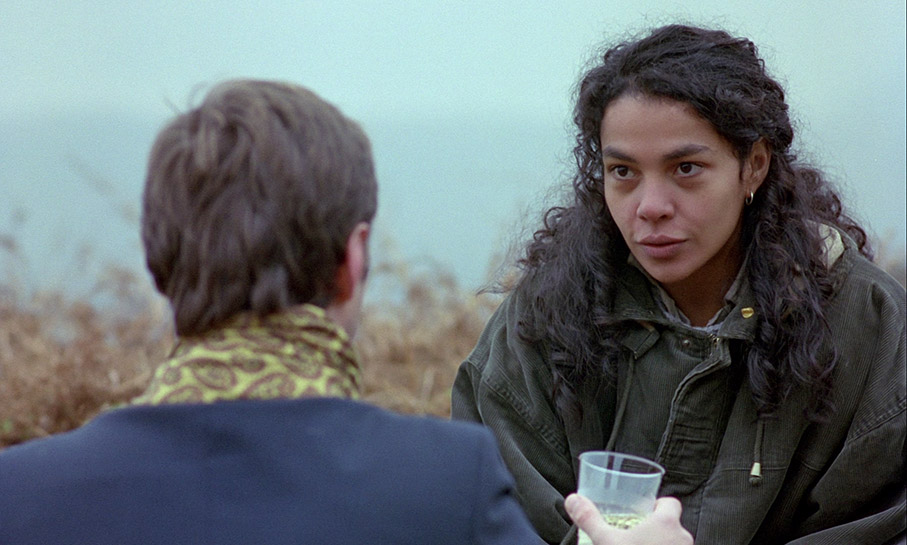
It’s here that Carla reveals that she is from Nicaragua, which in the 1980s was still in the aftermath of the revolution that overthrew the corrupt Somoza government and replaced it with leaders who actually cared about the welfare of their people (imagine that). The new FSLN government set up countrywide health and education programmes, and launched a campaign of agrarian reform that redistributed land formerly owned by a wealthy few. Fearing that it could prove to be a template for other Central American countries to follow, the American government employed a combination of open and covert methods to destabilise the country and bring down the democratically elected FSLN by enforcing economic embargoes and by funding and providing intelligence to counterrevolutionary guerrilla fighters known as Contras. The Contra guerrillas employed terrorist tactics and were responsible for a string of atrocities and human rights violations, and despite the efforts of the Sandinista army and many volunteer locals, the combination of years of destructive Contra attacks and threats by America to continue the economic embargo if the FSLN party was re-elected saw it removed from power in 1990.*
In 1987, when this film is set, the country had been battling the Contras for many years and it quickly becomes clear that Carla is carrying some serious emotional scars that are primarily linked to something bad that happened to her boyfriend Antonio. It’s information Carla volunteers only after a traumatic incident brings her and George closer together and the shocked George sees the scars on Carla’s back. “What happened to Antonio?” George asks Carla as he comforts her, to which she sincerely but ominously responds, “Promise not to ask. Promise on the life of your mother.” The very next day, George meets Carla in a café and presents her with two air tickets to Managua. Carla’s first response is to dissuade George by telling him that it’s too dangerous and revealing that she doesn’t know even where Antonio is, but George remains insistent, coinvinced that not knowing what has happened to Antonio is tearing Carla apart.
Laverty’s first script for Loach evolved not out of some ambition on his part to be a screenwriter but his experience working in Nicaragua as a human rights lawyer for over two years and his desire to find a way of spreading the word about what he had witnessed. This, coupled with Loach’s insistence on accuracy at all levels and the casting of local non-professionals – all of whom were apparently keen to participate in order that the story of their struggle be more widely heard – gives the film’s Nicaragua-based final hour an air of authenticity that should help deflect any misplaced accusations of Central American political tourism by visiting white filmmakers. And yet, when I first saw the film on its release I distinctly remember feeling just a little disappointed, and only coming back to it years after my last viewing was I able to more clearly understand why.
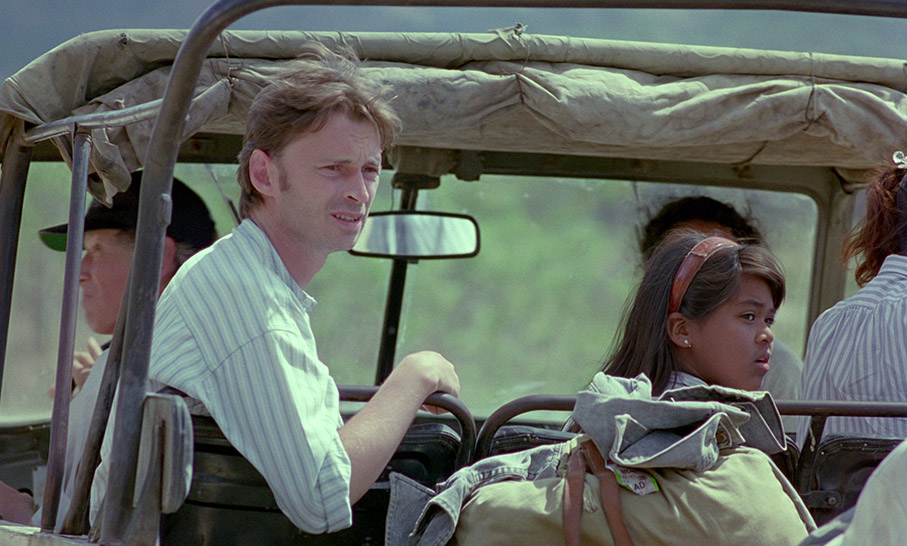
My first and biggest problem is that I went into the film not just with high expectations but very specific ones for its content and narrative. There were three factors at play here. The first was that it was directed by Ken Loach, a filmmaker I deeply admired and who has delivered a whole string of devastating emotional gut-punches in the course of his film career. The second was that this was Loach’s follow-up film to his Spanish Civil War drama, Land and Freedom, a film I adored and was expecting Carla’s Song to be a companion piece to. The third lay in my own interest in the politics of post-revolutionary Nicaragua during the 1980s, my frustration at how the revolution was being so cruelly undermined, and my horror at the reports of some of the atrocities being carried out by terrorists that the then American president was openly praising. It’s a subject that was certainly dear to my heart during the period in which the film is set, my knowlege of which was expanded by the long conversations I had with a colleague at that time, a college lecturer with a medical background who worked as a volunteer nurse in Nicaragua during her summer breaks. I thus went in expecting a film that was a no-hold-barred exposé of the horrors being inflicted on the Nicaraguan people by the CIA-backed Contras. And while this is definitely a factor, that’s not the film that Carla’s Song turned out to be.
For a start, it included elements that I wasn’t used to seeing in a Ken Loach film. Background information is at one point is provided via hospital notes read out verbatim by George in a thoughts voice-over, while later a key aspect of Carla’s backstory is revealed as a memory-triggered nightmare. Both are commonly used cinematic techniques, but here they can't help but puncture the air of documentary realism that Loach has made his own. The actions of the Contras are largely communicated through stories told to George by American activist and ex-CIA operative Bradley (a well-cast and suitably anger-driven Scott Glenn), and when Gorge does find himself in the midst of an all-out assault by the Contras, the main focus is the destruction of buildings, with the human cost limited to the death of a local man that George has recently bonded with. Coming back to the film with this in mind I saw it in a different light, not as a study of the struggle of the Nicaraguan people but as a look at how the conflict can impact on people whose suffering and hardship is outside the experience of those of us who have only read about it in books or press reports. It is, as producer Sally Hibbins says in the extras on this disc, “a very gentle film.”
Although focussed in part on the titular Carla, the film is also about George and his awakening to a world that he barely knew existed and how he is changed by the experience of seeing the conflict and its impact on ordinary people first-hand. Initially, George does come across as a little self-centred and directionless. He has a steady job and a girlfriend but doesn’t seem completely committed to either, and unlike Sammy he still lives at home with his mother and sister, and given that Sammy is also a bus driver we can presume this is not a purely financial decision. George is also given to acting on impulse, throwing everyone off the bus to drive Carla several miles and down a dirt road to a quiet beauty spot overlooking Loch Lomond, where they drink champagne and make out after a sudden rainfall turns the muddy ground on which the bus is parked into an unnavigable bog. It’s this aspect of George’s personality that makes sense of his snap decision to fly to Nicaragua with Carla to help her find Antonio, an initially unlikely-seeming move by someone you suspect has never even been abroad for a holiday. His cocky self-assurance also initially brings him into conflict with Bradley, a man with years of experience of the Nicaraguan conflict and who recognises George for the naïve young outsider that he technically is. There's also a strong suspicion that George's resentment of Bradley stems in part from the fact he has been close friends with Carla for years and understands her better than he ever will.
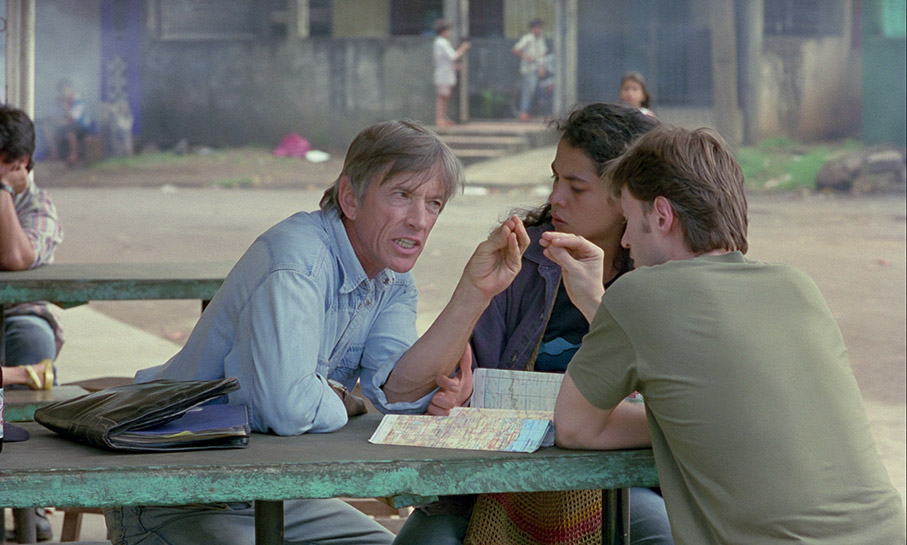
I’ve certainly warmed more to Carla’s Song on subsequent viewings, unburdened as I am now by expectations that the film was never designed to meet. The performances, as ever with Loach, are spot-on. In his second film for Loach (the first was the excellent Riff-Raff), Robert Carlyle is terrific as George, from the cockiness of his early scenes to his distressed panic when events take a life-threatening turn for Carla and his utter terror when the Nicaraguan village he is visiting comes under Contra attack. As Carla, Oyanka Cabezas is both quietly bewitching and movingly sad, convincing completely in her sudden explosions of trauma, the reasons for which – notably the complete meltdown she suffers when a Nicaraguan bus driver is injured whilst attempting to repair the vehicle – only become clear when Bradley outlines the full extent of her backstory to George. That’s pretty damned good for someone who had never had a substantial role in a film before (I’m certainly not counting her brief appearance as “Indigenous Girl” in the 1991 Sandino) and who had to learn a basic level of English in a matter of weeks for the part. Mind you, she’s here matched for her dedication by Carlyle, who had to learn to drive a double-decker bus and pass his PSV licence to be able to legally do so on the street with passengers on board, a key requirement due to Loach’s insistence on filming on actual locations. Despite being only on screen for a few short scenes, Gary Lewis is lovely casting George’s good friend Sammy, a warmer and more instantly likable character than his memorable role as the religiously intransigent brother in Peter Mullan’s directorial debut feature, Orphans a couple of years later. Unsurprisingly, a substantial portion of the supporting cast is made up not of professional actors but local people with whom the leads interact in an almost documentary manner. Often there’s a winning naturalism to this – the group of young female soldiers who are fascinated by George and openly flirt with him is a delight – though just occasionally the dialogue feels manufactured to pave the way for a punchline, as when questions George is asked about the products grown in his homeland leads to him triumphantly pulling out and sharing a bottle of whisky.
I’m not going to claim Carla’s Song is one of my favourite Loach films, as while I did become involved in the story and characters and was genuinely moved by the story and individual scenes, I never suffered that emotional body blow that is a signature feature of Loach’s finest works – think the terrifying visit from the loan shark in Raining Stones or the heart-breaking food bank breakdown in I, Daniel Blake. It is, as is claimed by Sally Hibbins, a gentle film, one focussed primarily on the ultimately separate emotional journeys taken by its two lead characters and the unexpectedly affecting nature of their individual resolutions. It also marked the birth of a new partnership between director and screenwriter that has lasted to this day and has given birth to some of the finest and most important works in modern British cinema. The plot development is just occasionally a tad rough around the edges, and the sequence in which George ignores Carla’s forceful pleas to leave her alone – one that peaks with him following her into her room and forcibly hugging her in spite of her protests – has not aged too well. But these are small gripes in a film that delivers as personal drama and as a still-relevant reminder of the ways in which a superpower with vested interests can use its wealth and resources to destructively reshape the future of a whole country and its people.
Having last watched Carla’s Song on its 2005 DVD Special Edition release from Universal, I couldn’t believe how much better it looks on Indicator’s new Blu-ray, with every aspect of that earlier DVD transfer significantly improved on. It’s no surprise that with the higher resolution of Blu-ray the image is far sharper, with detail much more clearly defined and more of it visible, but the colour is also more naturalistic and the contrast more finely balanced – the tonal range here is really nicely judged, with solid black levels, none of the highlight burn-outs visible on the DVD transfer, and more visible detail is shadow areas. As you might expect, the image is also free of dust and damage and displays a fine film grain throughout.
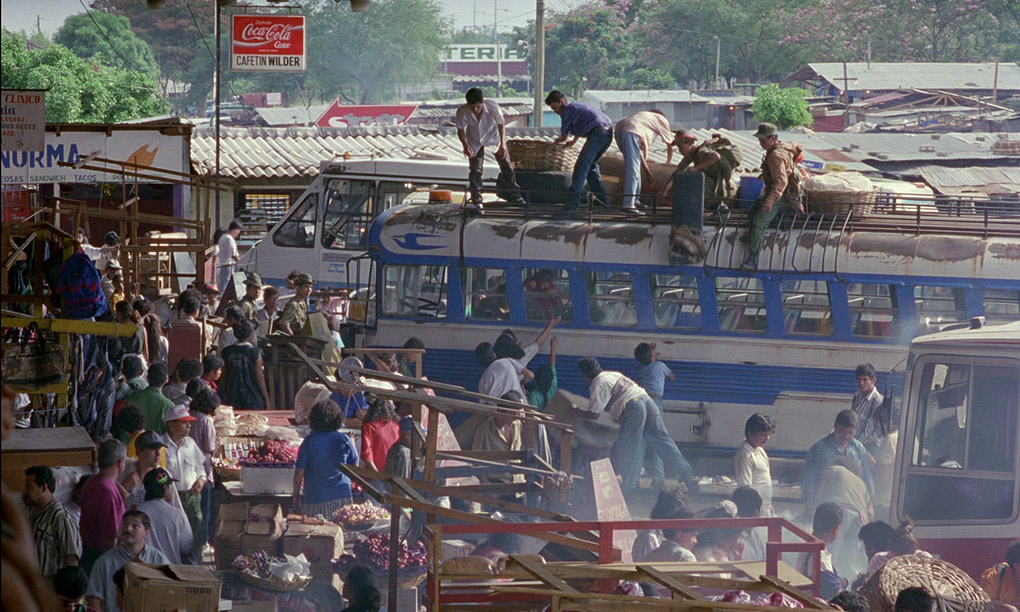 |
| The same moment from the new Indicator Blu-ray (above) and the previous Universal DVD (below) |
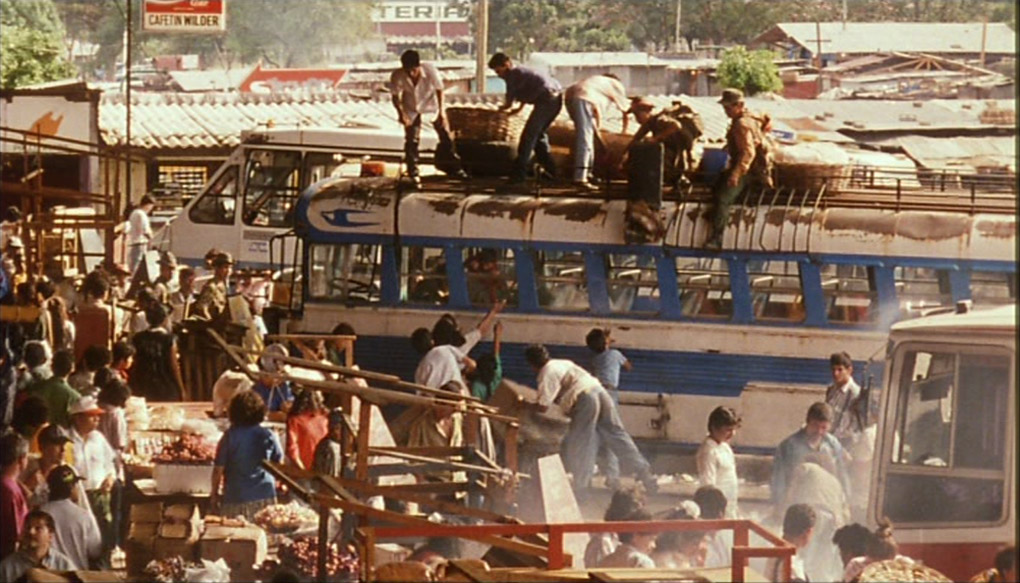 |
The most surprising improvement here, however, lies in the framing of the image, which on the Blu-ray is 1.66:1 rather than the 1.76:1 of the Universal DVD. This may suggest that the DVD transfer was slightly cropped at the top and bottom of frame, but comparing the two transfers side-by-side reveals that it’s far worse than that, with sizeable chunks of the picture cropped from the top, bottom and left-hand side on the DVD. This is clearly illustrated by the two screen shots above from the same moment in the film. On the DVD grab, the Coca Cola logo on the sign at the top of the screen, plus the wording on shop sign on the left of screen and some of the wooden frames of the market stalls at the bottom of screen have all been cropped out, The earthier colour palette of the DVD transfer is plainly evident here, and the detail visible on the white corrugated rooftop in the background of the Blu-ray grab is almost completely washed out on the DVD. I don’t think I was ready for how serious an upgrade this new transfer proved to be.
The Linear PCM 2.0 stereo soundtrack is clean and clear and boasts a pleasing dynamic range, with George Fenton’s score and the explosions of gunfire and rockets faring particularly well. Dialogue is generally clear, though I did struggle a little to make out some of the conversation in the early nightclub sequence, so it’s handy that optional English subtitles have been provided for the deaf, hearing impaired and those whose ears are not fine-tuned to Glaswegian accents in noisy environments.
Audio Commentary with Ken Loach and Paul Laverty
Sourced from the abovementioned Universal DVD, this commentary by director Ken Loach and screenwriter Paul Laverty is a mine of interesting information, particularly for anyone new to the film or with little knowledge of the socio-political situation in post-revolutionary Nicaragua, which Laverty had first-hand experience of. There are a few pauses, but they don’t last that long and when the two men do talk it makes for compelling listening. Areas covered include auditioning Nicaraguan locals for the part of Carla, Robert Carlyle learning to drive a bus for the role of George, the Glasgow locations, George Fenton’s music, the stories that Laverty heard when working in Nicaragua and how they scarred some people for life, the desire of the locals to get involved in the film, and much more. Loach confirms that Carlyle didn’t know what he was going to find in a particularly traumatic scene and that his reaction was thus partly for real, Laverty provides information on the situation in Nicaragua at the time and reveals that the character of Bradley was based on someone he knew, and Loach is not above criticising elements that he believes could have been handled better. This is just a small sampling of the cornucopia of interesting stories told by the two men. It’s also here that Loach, I’m guessing half-jokingly, suggests that with hindsight they should have changed the title of the film from Carla’s Song to ‘Crazy Driver, Crazy Dancer’. Unusually, but usefully, this commentary also has optional English subtitles, something I only discovered when switching the subs on using my Blu-ray player remote.
Sally Hibbin: An Extraordinary Thing (18:05)
Producer Sally Hibbin gives a brief overview of how producing the widely acclaimed TV series A Very British Coup saw her contacted by Ken Loach and how this led to her working with him on Riff-Raff and subsequent films, including Carla’s Song. She outlines some of the difficulties that working in Nicaragua and Loach’s insistence on shooting in chronological order created, but also recalls that they had tremendous support from the Sandinista army and that filming in the country was a great experience. Intriguingly, she reveals that when casting for the role of Bradley, Martin Sheen and William Hurt were both in the running at one point, but also that when Sibbin sent the script to Robert Duvall, who had once written to Loach saying that he had always wanted to work with him, he turned the role down because, to quote Hibbin, “We’re not on the same side in this conflict.”
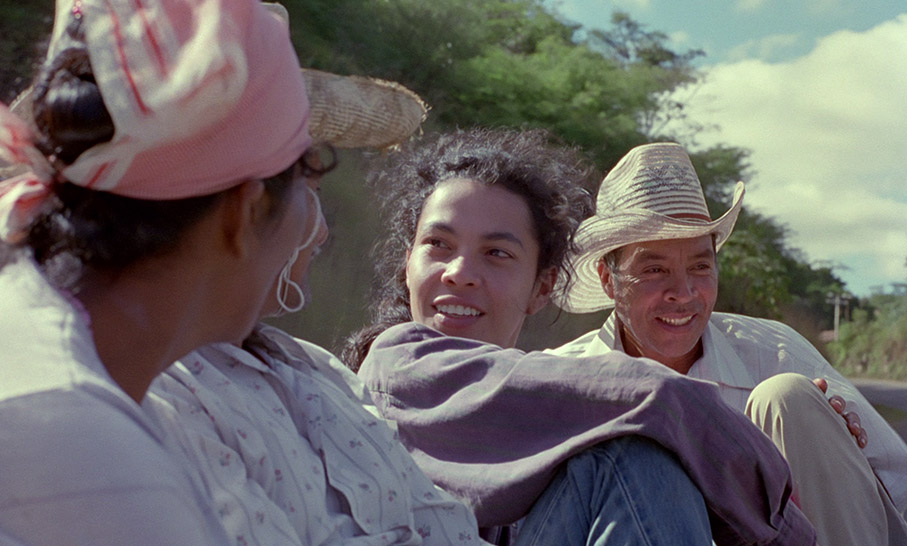
Jonathan Morris: Two Worlds Collide (8:24)
Also a Loach regular, editor Jonathan Morris here reflects on what was an unusually big film for them and how exciting it was to cut action scenes for a change. He talks about the difficulty of editing sequences around Oyanka Cabezas’ hesitant and only recently learned English, working with footage in which the characters only speak Spanish, and how the time it took to get the newly shot material from Nicaragua to Britain and to sync the freshly processed rushes meant that it was too late by then to fix any problems. There’s also an interesting story about the film’s Venice Film Festival screening and some wrongly positioned subtitles, which required a seemingly impossible 24-hour turnaround to correct that had Morris chewing his fingernails but seemed not to worry the calmly confident Loach.
George Fenton: Tuning in to Nicaragua (9:57)
Score composer George Fenton, another Loach regular, talks about his approach to planning and writing the music for a film he holds in very high regard. He outlines how he normally approaches scoring a film for Loach – he usually comes on board only after the main edit is complete – and how it differed on Carla’s Song, where he flew out to Nicaragua with the crew during the shoot itself, which enabled him to source local music and musicians.
Fergus Clegg: Background to the Art (13:42)
Loach’s regular art director, Fergus Clegg, is not the first to comment on the unusual step of having to film the flashback scene in Nicaragua, then relocate to Glasgow and then return to Managua due to Loach’s insistence on filming in sequence, then provides details of the work done by his team in Glasgow and the one led by Llorenç Miquel in Nicaragua. He talks about the use of the image of Sandino as a recurring visual motif, claims that Robert Carlyle couldn’t drive at all when he was cast and had to pass his driving test before then learning to drive a bus as well, and notes that Loach is a stickler for accuracy and that he will not accept anything that is incorrect for the time and location. He also tells an intriguing story about filming with the army and not realising that the soldiers were also protecting them from armed gangs that had gone rogue after the war.
Ray Beckett: Sounds of Music (9:43)
Sound recordist Ray Beckett, another Loach regular, also reflects on his director’s preference for shooting films in chronological order (it seems clear that almost every interviewee was asked about this first), then reveals that he always sets his sound levels during the rehearsals and then lowers them on the take in the expectation that the actors will be louder then. He suggests that the documentary background of the director and main crew members results in films that have the speed and spontaneity of a documentary with feature film production quality, talks about minor alterations made to locations to assist the clean recording of dialogue (Loach refuses to do additional dialogue recording), and recalls the protection given by the Nicaraguan army during the flashback shoot and being just a little concerned about the presence of live rounds in a scene in which the extras were firing blanks.
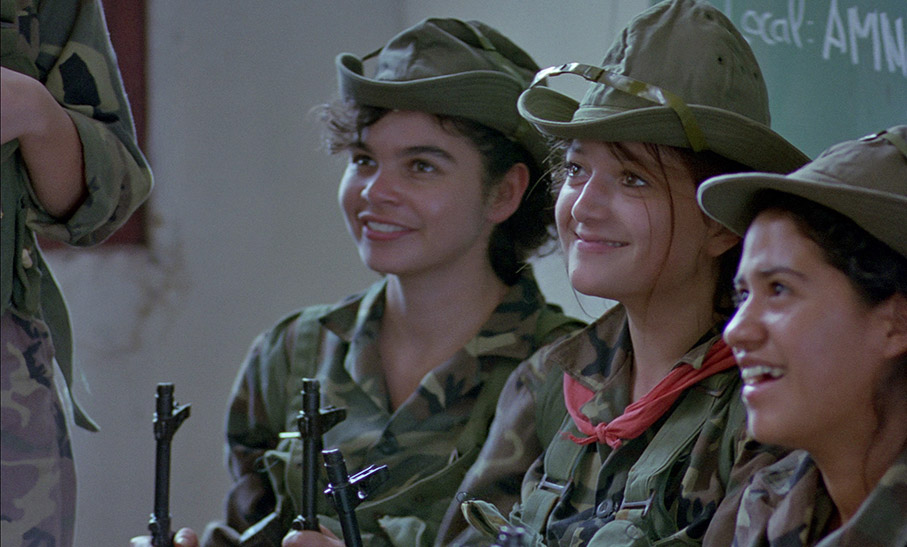
Susanna Lenton: Keeping Up Appearances (9:31)
Script supervisor Susanna Lenton looks back at how working with Loach on Land and Freedom helped to build a bond of trust between them that carried over to Carla’s Song, her fourth film for the director. She reveals why shooting in sequence makes little difference to her job, but does offer the best reason yet for why doing so here was helpful for first-time actor Oyanka Cabezas, as well as outlining ways in which Cabezas was helped by the more experienced Robert Carlyle.
Deleted Scenes (11:41)
Ten short sequences, some very brief, that were present in the film’s theatrical cut but were removed by Loach for the aforementioned 2005 DVD release. They play here in sequence in the order detailed below, and also have optional subtitles for the deaf and hearing impaired. In accordance with Loach’s wishes, the version of the film included on this Blu-ray is the same Director’s Cut he prepared for the previous DVD. The cut scenes are as follows:
| ● |
Footage of Carla immediately after she jumps off the bus, as she runs down the road, then stops and watches from a distance and sees George get into trouble with McGurk. This does help justify her later concern that George had got into trouble for helping her and thus provides stronger motivation for her to seek him out to give him the gift. |
| ● |
More footage of George fixing the bike outside his family home and some interaction between him, his mother and his sister Eileen. |
| ● |
George calls the fake number given to him by Carla. |
| ● |
A sleeping George is woken by his sister Eileen, who opens and reads out a letter from his employer informing him that he has been fired following his theft of the bus that he drove out to Loch Lomond and left stuck in a bog. |
| ● |
George stops Eileen on her way to school and asks to talk to her. Having revealed his plans, he is then schooled by his far more knowledgeable sister on the political situation in Nicaragua and the fact that the country is effectively at war. It’s exposition, yes, but useful for viewers with little knowledge of the situation into which George is heading. |
| ● |
Carla and George flying over a mountainous region as they approach Nicaragua is intercut with local singers and dancers performing at their ultimate destination, which ends with the exuberant rendition of a defiantly revolutionary song. |
| ● |
A brief extension of a Nicaraguan bus ride scene where George gives away one of the toiletries originally intended as a gift for Carla’s family. |
| ● |
Footage cut from the sequence in which we first encounter Bradley, as his meeting with his fellow aid workers ends and Carla approaches him and the two hug and speak. |
| ● |
More of the sequence in which George is persuaded to dance with Carla, which unfolds and ends in a way that really underscores their fondness for each other. |
| ● |
A sequence showing what happens after George steals the Nicaraguan bus and Bradley jumps on board. They pause briefly to allow Bradley to steal a couple of automatic rifles from a group of nearby soldiers, and Bradley then keeps urgent watch while George drives. When the bus comes under rocket attack from bandits, Bradley opens fire and George drives in a terrified panic. This adds weight to the decision George has to make regarding whether to stay or head home. |
Theatrical Trailer (2:02)
A solidly assembled trailer that includes footage from the deleted scenes and from late in the story, but not in a way that acts as a spoiler.
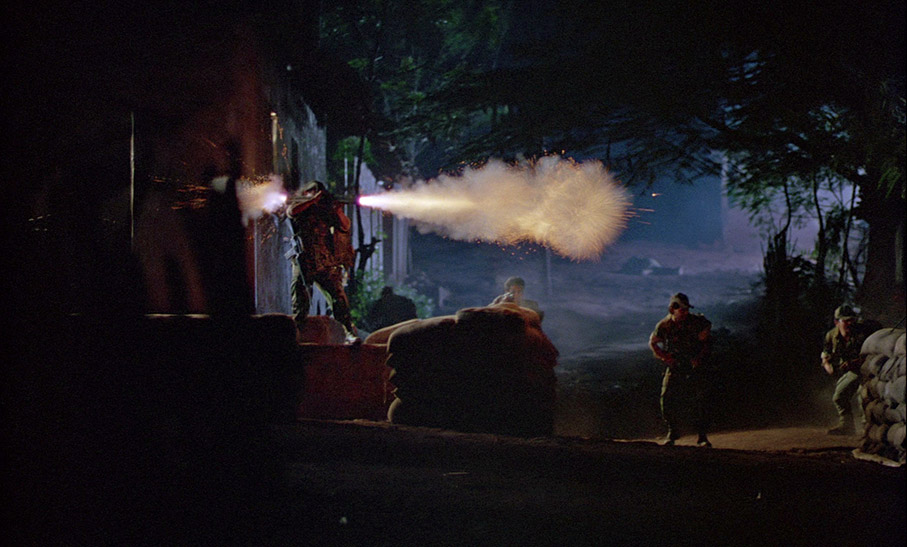
Image Gallery
46 screens of promotional stills (including three of Loach at work), press notes page scans and posters.
Booklet
After full credits for the film, there is a thoughtful and in-depth essay (albeit one that quotes two of the exact same bloody lines as I did – this keeps happening) on the film by critic Michael Pattison. Next is an extract from Paul Laverty’s published screenplay of Carla’s Song, in which he recalls his experiences in Nicaragua when working as a human rights lawyer, a piece that provides an excellent grounding for anyone not familiar with the situation. Following this are some extracts from a story published in The Guardian in November 1996 and written by Dan Glaister, who travelled with Loach and his team when they returned to Nicaragua to screen the finished film for local press, students and the people of Ducuale Grande, where much of it was shot. Also from The Guardian is a short piece from April 2005 in which Loach explains why he decided to remove several short sequences for the Universal DVD release. Rounding things off are two extracts from contemporary reviews, one critical of what the reviewer saw as over-simplification of a more complex situation and one praising the accuracy of the film’s depiction of Nicaraguan life.
Carla’s Song was always a Loach film I liked rather than loved, but coming back to it after a break of several years I found myself warming more to what it does right and being a little less critical of what I felt were its omissions, though I’m still waiting for a film that really tackles the situation in post-revolutionary Nicaragua head-on and in the sort of depth it deserves. The image quality on Indicator’s Blu-ray is a massive leap over the previous Universal DVD, and the inclusion of the special features from that disc, a string of newly-filmed interviews and a very fine booklet make this not just a very worthwhile purchase for newcomers but also an essential upgrade for anyone who owns the DVD. Warmly recommended.
|